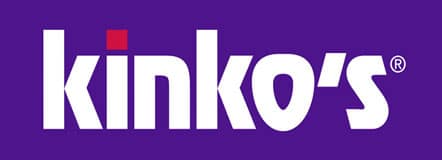
A lot of advertising strategy focuses on painting a brand as new, different, and better.
What benefits do you offer that competitors don’t?
And if you can credibly make those claims, more power to you.
But most products are not bought to maximize, they are bought to satisfice.
You simply don’t have the spare time or focus to research and maximize most purchases.
So you find the good-enough, safe choice and move on with your life.
That’s important with products, but even more so with services and shopping experiences.
The safe, easy choice wins out over the potentially better choice that carries more risk.
So how do you become the safe choice in the minds of customers?
But I think we’ve all had enough experiences with guarantees to know that a great guarantee from an unknown organization isn’t always believed.
Nor should it be.
The more powerful factors are familiarity and reputation.
Familiar companies feel safer than unfamiliar ones.
And familiar companies with great reputations feel safest of all.
Better yet, these factors also augment the persuasive power of your guarantees.
So how do you become familiar?
Long-term bonding campaigns.
Bonding campaigns help the public feel as if they “know” you and share your values.
They can also serve to highlight and amplify your hard-won reputation with customers.
So… assuming you’re already making use of a strong bonding campaign, reputation magnifiers, and guarantees, what else can you do?
How else can you become a safer choice?
You can focus on anxiety-producing uncertainties faced by your prospective customers, then eliminate them in your ads.
That means you’ll have to do enough customer research and empathy work to figure out what those anxiety-producing elements are.
But the juice will be well worth the squeeze.
And in the absence of your own customized insights, let me give you some generic examples of anxiety-producing elements
- Will I be able to afford this?
- How quickly can they fix my problem?
- Will they be open when I get there / call?
- How much support do they provide?
- Will this work for someone like me?
- Is there fine print I need to worry about?
On the affordability question, flat-rate, up-front pricing can be a godsend. Especially if you put that in your ads and on your website.
Easy payment options can also work quite well.
Heck, Spence Diamonds become legendary for having the prices clearly marked on all their engagement rings, thereby eliminating the anxiety-producing necessity of having to verbally ask the price of the jeweler (possibly with your fiancee standing right next to you).
And, yes, they very wisely put that into their ads:
But let me give you an even more powerful example for “Will they be open when I get there?”
My colleague Stephen Semple tells an amazing story about Kinko’s (now FedEx Office).

See, the CEO of Kinko’s came from convenience stores, and so was aware of some fascinating research from that industry.
The research was on staying open 24/7.
And what convenience stores found was that overnight sales alone were never, ever worth the additional expense.
Just how many people come into a 7/11 at 3am to buy something, right?
Not nearly enough.
So why do so many of them stay open all night?
Because those stores that advertised “Open 24/7” experienced a 30% increase in DAYTIME sales.
Weird, huh?
Except not so weird when viewed in the light of the anxiety around “Will they be open when I get there?” or “Are they open this early / late?”
Being known for 24/7 operation made those convenience stores a safe choice.
And so it boosted sales and made great economic sense overall, even when the night-time sales themselves would never justify the expense.
Which is why Kinko’s copied that strategy and also saw a 30% increase in daytime sales, even when night-time sales never amounted to much.
It’s one reason Kinko’s became the dominant player in that industry.
So… what are you doing to ensure your brand is the safe choice?
What are you doing to erase buyer anxiety in your ads?
P.S. Like what you read? You can browse all my other posts here.
- Getting a Foot in the Door — Of Perception - November 27, 2025
- What Digital Superstars Know About Offline Advertising - November 17, 2025
- Unmistakable: A Tale of Two Boots and Branding Done Right - November 8, 2025
